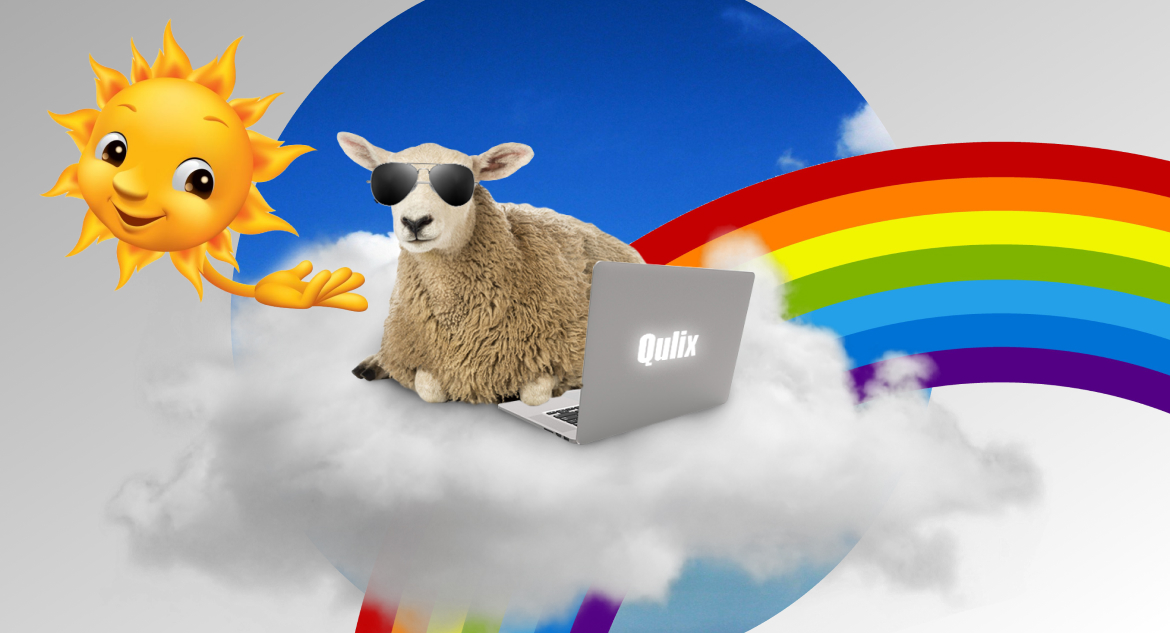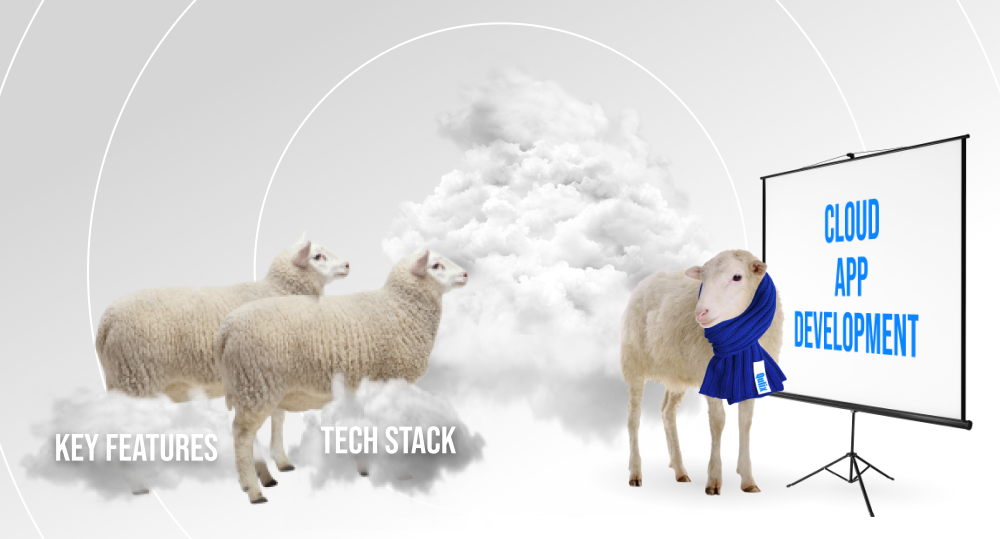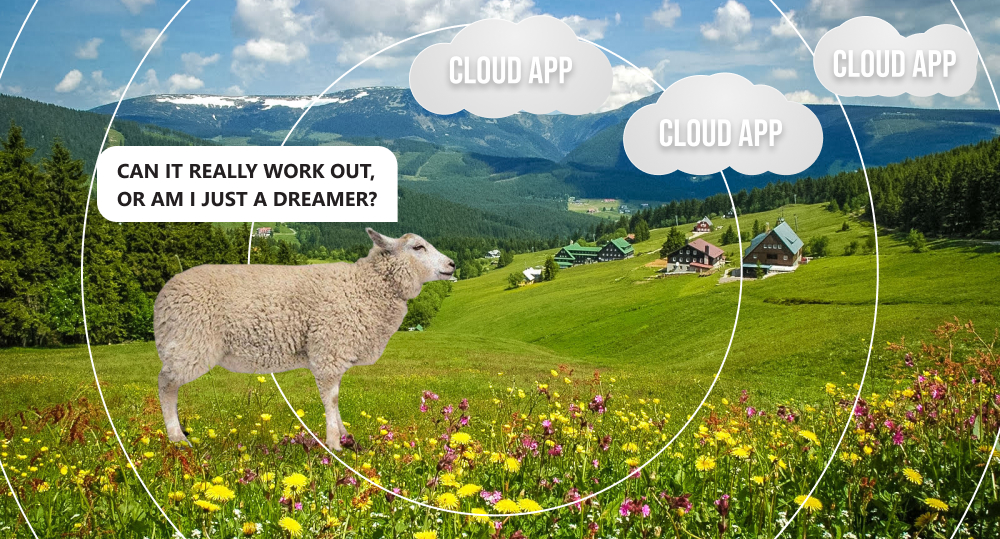Cloud computing is everywhere. To translate the scale of its presence to the money language, we have numbers from the GlobeNewswire report that says, “The global cloud computing platform market size is expected to grow from USD 545.8 billion in 2022 to USD 1240.9 billion by 2027.” Seeing these impressive figures and being convinced that cloud development is profitable and effective, increasingly more businesses around the globe engage in it and build applications for that dreamy beyond.
In this article, we're going to discuss why developing software for a cloud environment is a good idea, explore the types of cloud applications, and the steps to build one. So get comfortable because we're going up to cloud nine!
written by:
Stanislav Makarovets
DevOps Engineer
Contents
Why Join the Cloud Computing Market?
Cloud computing, cloud solutions, cloud computing solutions, cloud services, a cloud-based system — all these interchangeable terms mean the same thing: the on-demand delivery of IT resources over the Internet with pay-as-you-go pricing. These resources include tools and applications like storage, networking, multiple remote data centers, software, and other components that you keep, manage, and access through the cloud. Cloud service providers such as Amazon Web Services (AWS), Microsoft Azure, and Google Cloud Platform can deliver, i.e., rent out, any cloud solutions to their subscribers.
The most popular cloud services that can be deployed in hybrid, public, and private clouds* fall into three categories:
- Infrastructure as a Service (IaaS). This cloud computing solution is a great choice for established businesses and startups. For the former, it’s convenient because it provides the environment for research, testing, development, and agile scalability. For the latter, it significantly reduces the infrastructure costs (e.g., virtual servers to store databases or tools that connect employees' computers into a single network), which is crucial for a young project. How does that happen? With IaaS, you can rent the entire IT cloud infrastructure that your provider will be responsible for. You, on the other hand, will gain access to operating systems of cloud servers and ability to configure and install applications. AWS, Microsoft Azure, Google Cloud, IBM Cloud, and Digital Ocean are the great examples of IaaS software.
- Platform as a Service (PaaS). These cloud services focus on the already configured tools for cloud software development. As Microsoft puts it, “Like IaaS, PaaS includes infrastructure — servers, storage, and networking — but also middleware, development tools, business intelligence (BI) services, database management systems, and more. PaaS is designed to support the complete web application lifecycle: building, testing, deploying, managing, and updating.” Since you don't need to build any tools from scratch, you achieve time- and cost-efficiency. And the cherry on the cake: the cloud provider monitors network settings, updates, and security for you. Examples of PaaS are Google App Engine, Apache Stratos, Azure SQL Database, Splunk, Logit.io, and OpenShift.
- Software as a Service (SaaS). This cloud computing service model represents a ready-to-use program that delivers applications managed by third parties over the Internet. The only difference between SaaS and an application on a device is that a cloud app is stored, well, in the cloud. You can access it offline and not only via a web browser, but also via custom apps for devices that connect to the Internet, e.g., tablets or mobile phones. Google Workspace, Dropbox, Zoom, Microsoft 365, Slack, and Netflix — these solutions are the perfect examples of SaaS.
*If you would like to learn more about private, public, and hybrid clouds, then we have an article to recommend! Click here to read about cloud deployment models.
As you can see from the examples of the most popular types of cloud services, cloud services may bring the following benefits to a business:
Cost-effectiveness
No need to buy expensive hardware and software, you can rent an infrastructure alongside all the necessary development tools and pay-as-you-go.
Flexibility and scalability
Whether you need to scale your project up or down, cloud architecture makes it possible to adjust capacity quickly and maintain efficiency, without excessive spending and downtime.
Data management
All documentation is stored in one format and in one place, which decreases human errors and boosts productivity of cloud app developers.
Mobility
Cloud platforms allow accessing data from any device and anywhere in the world. As a result, there are significantly fewer halts in the workflow, and the communication between team members gets smoother.
High competitiveness
Cloud development allows you to improve your products quickly and offers many methods of rapid deployment.
Overall business efficiency
You can delegate certain aspects of business maintenance to trusted cloud services providers and focus on priorities.
Like we said, cloud computing is everywhere. It is only natural that the popularity of the cloud development concept grows respectively. To impress you with it even more, we'd like to introduce you to the app types you can run there.
What Is Cloud Development, and What Cloud Apps Are There?
The philosophy of cloud development is simple: why develop cloud apps on a computer if, in the future, you're going to run them in a specific cloud environment? It's best to build, test, and run software within that cloud environment right away!
Nevertheless, it's not that simple. People use interchangeably the terms like cloud development (or in-cloud development), cloud-based development, and cloud-native development, even though cloud-native, cloud-enabled, and cloud-based apps are three different things. Thus, it is incorrect to assume that you'd use one approach to build all three. Why does this terminological mix up happen?
Cloud application development is a relatively new concept, so the community is yet to come to a consensus on what it means. Many believe that an app is cloud-native as long as the workloads run in the cloud and not on-premises. Others think that to be cloud-native, you have to utilize cloud computing resources to their fullest potential.
Cloud applications in general are pieces of software that distribute the processing logic and data storage on a device between a client-side and a server-side. The difference between the three app types and ways to develop them lies in how they utilize cloud technology. We're going to explore those peculiarities and devote the most attention to the cloud-native app type because a) it directly corresponds to the idea of cloud software development and b) 75% of companies are focusing development on cloud-native applications.
Cloud-Native Applications
- A cloud-native application is a program created specifically in and for a cloud environment: private, public, and hybrid clouds as well as a community cloud.
- Cloud-native apps function as a set of interconnected services (APIs) that allow end users to access a cloud provider's application or service and connect microservices and containers. APIs are crucial because they define what features and functionalities apps and services might have, as well as the best ways to implement them. In cloud development, they also provide simplified maintenance and security.
- Cloud-native development relies on a microservice architecture: an app there represents a set of services, where each service runs its own application process independently through APIs. Unlike with traditional app development, i.e., a monolithic architecture (it utilizes one code base for the whole solution and has no space for pinpoint changes — you need to update the whole stack of app layers), this approach allows for highly scalable, flexible, and easily adjustable applications.
- To implement the paradigm, cloud developers utilize containers like Docker. As Google defines them, those are “packages of software that contain all of the necessary elements to run in any environment. In this way, containers virtualize the operating system and run anywhere, from a private data center to the public cloud or even on a developer’s personal laptop. From Gmail to YouTube to Search, everything at Google runs in containers.”
- Another thing that makes cloud-native development possible is DevOps, i.e., development and operations. That is a combination of software engineering philosophies, practices, and tools that relies on communication between developers, IT operations, and other teams. This synergy of components helps businesses elevate the quality of their products and adapt quicker to emerging market demands. It also enables speedy deployment of products and services in the cloud computing environment. Unlike companies that use a traditional approach to crafting applications, those who adapt DevOps and go for cloud software development successfully preserve their competitive edge.
- Last but not least, cloud-native development is dynamically orchestrated. To manage containers that are quite complex and can get out of hand, developers use container orchestration platforms like Kubernetes. As VMware writes, “Container orchestration is what makes that operational complexity manageable for development and operations — or DevOps — because it provides a declarative way of automating much of the work”.
Cloud-Enabled Applications and Cloud-Based Services
- Cloud-enabled applications were built with a monolithic architecture, and then the cloud migration happened. Even though they leverage virtual resources now, it is not possible to scale them in the same way as cloud-native ones because their design stays the same. Enterprises with legacy IT systems that want to join the cloud sector choose this approach as the first step.
- Cloud-based solutions are all about balance: they are a fine combination of cloud-enabled and cloud-native apps. Although they, too, utilize a monolithic architecture, you don't need to upgrade their infrastructure: you can move your solution to a cloud provider like AWS that will take care of its maintenance. Thus, these systems offer scalability (but cannot harness the full power) of cloud-native apps without the need to redesign the architecture.
Cloud Development: How to Make That Happen?
Whether you're going to build a cloud-native, cloud-based, or cloud-enabled application, broadly speaking, the cloud development process is the same. To give you a general idea of what you might experience in its course, we've prepared a general cloud development guide for you.
Stage 1. Marketing & Finances
- The first thing to do is a thorough market research. It will show the products that are in demand and help you find your niche. That niche will indicate your target audience and their needs. Discovering a way to respond to them will give you a hint as to what kind of product it's best to build.
- Decide on the key functionality of your cloud app, i.e., a unique offer to the target audience that will make you stand out among competitors, and think through user acquisition.
- Outline your UI/UX design concept.
- Estimate operating costs (like a subscription fee for cloud services) and budget for cloud software development itself.
Stage 2. Taking Care of the Tech Side
- Think through the app's features, size, scalability plans, and use that info to create an MVP scope description, i.e., the minimum set of core features of your cloud solution.
- When going for cloud software development, it is crucial to select the right cloud service provider. Make sure they can protect your data, provide scalability, offer good speed and storage for your application.
- If that applies to your case, choose the cloud service model for your app (IaaS, PaaS, or SaaS) and decide on the cloud app design and architecture.
- Based on all of the above, decide on the tech stack. The rule of thumb here is the more you want to stay in control, the wider the stack should be.
- Decide on the team for your cloud development project. Are you going to browse outsourcing companies that provide cloud development services? If so, then make sure the company has a good reputation, and its portfolio can boast of cases similar to yours. If you're going to hire an in-house team, search on LinkedIn or Glassdoor for the right fit. Also, to ensure that your potential cloud developers have proper skills, conduct a few interviews.
Cloud Developer Skill Set
- Database skills in general and hands-on experience with NoSQL, SQL, MongoDB, or Postgres in particular;
- Programming skills with a language such as Java, .NET, Ruby, Python, PHP, or Perl;
- Familiarity with web services (XML, SOAP, UDDI, and WSDI), APIs, architectural constraints like REST that enable API providers to deliver data in multiple formats (plain text, HTML, XML, YAML, or JSON, which is incredibly popular at the moment), and the basics of cloud networking;
- Proficiency in using event streaming platforms, such as Apache Pulsar and Apache Kafka (alongside external components like ZooKeeper for carrying out operations & performing administrative tasks and data stores like Redis that mostly serves as an application cache or quick-response database);
- Knowledge of Linux (since many cloud applications are built on Linux servers) and scripting languages like Bash, Python, or Microsoft PowerShell to automate infrastructure configuration (the latter is a good choice since there are .NET projects with infrastructure built on Windows);
- Understanding of cloud providers such as AWS, Microsoft Azure, Google Cloud Platform, and others;
- For cloud-native development, it's also vital to know how containers and container orchestration platforms function, as well as have deep DevOps and automation knowledge;
- In terms of automation, experience with establishing CI/CD pipelines is crucial. CI/CD stands for continuous integration and continuous delivery development practices that deliver quick and reliable code changes through automation at these very stages. CI/CD tools include Jenkins, GitLab, CircleCI, Buddy, and others.
- Knowledge of data analysis and data security;
- Soft skills such as communication, time management, teamwork, and a problem-solving approach are also crucial for a cloud developer;
- A certification licensed by one of the big three cloud services providers we mentioned above is yet another proof of a developer's competency.
Stage 3. PoC and MVP Scope Implementation
We recommend going for Proof-of-Concept (PoC) first and only then developing the minimum viable product (MVP).
The PoC is all about rapid prototyping (for this, you can use Serverless Cloud) that will show if software engineers can, in fact, implement the critical (1–2) features of your cloud solution. This will help you save money since you will not waste it on ideas that just can't work out.
If the PoC stage was successful, then it's the MVP time on your cloud software development clock. Its goal is to attract early adopters and get market reviews, thus, yet again, you need to launch an app only with its core features (the rest of functionalities from the MVP scope). Simply put, the PoC shows whether your idea makes sense from the technical perspective, and the MVP demonstrates if that idea can make money.
At this stage, you should also implement UI/UX design and test the cloud app.
Stage 4. Product Launch
Honestly, in comparison to everything above, this is easy: deliver your app to the market, get feedback, and fix bugs. However, it's vital to keep in mind that cloud software development is never truly finished, so support your product, monitor emerging market trends, and make the app better.
Also, if your app performs well, and you get a huge visitor flow, you will be able to scale it up quickly and cost-efficiently. Such flexibility will help maintain user loyalty and increase their number.
Keep Your Head in the Cloud!
There's nothing cloudy about the topic of cloud development: it's pretty clear that it's here to stay. Cloud software in general and cloud-native development in particular take both businesses and consumers to new levels of speed, accessibility, reliability, and productivity. Whatever application you want to develop, cloud technology can make that happen. All these benefits are too delicious to resists. Don't you agree?
If you want to explore the heights of cloud software development, contact us! We will gladly consult you on the matter and go above and beyond to deliver you a top-notch solution.

Contacts
Feel free to get in touch with us! Use this contact form for an ASAP response.
Call us at +44 151 528 8015
E-mail us at request@qulix.com








